Baking soda and baking powder are staples in a baker's kitchen. Both chemical leaveners, they're key ingredients that give rise to everything from cookies to cakes to muffins. Since the role that they play in baking is so similar, the differences between the two ingredients can be confusing! This article explains the difference between baking soda and baking powder, how they work, how they're activated, and substitutes.
Jump to:
What are chemical leaveners?
Leaveners "lighten" dough and batter, causing our baked goods to rise. They are therefore incredibly important in baking. There are many types of leaveners:
- Yeast, which is commonly used in recipes for bread, pizza dough, cinnamon rolls, and doughnuts
- Steam, which can puff up dough like choux pastry (used to make churros)
- Air, which can be whipped into ingredients like eggs, butter, or cream to create rise
- Chemical leaveners - baking soda and baking powder - which become activated to release a gas, creating air pockets in baked goods and causing rise
If you've done any baking, you know just how common baking soda and baking powder are in everything from cookies to cakes to muffins and beyond. These ingredients are staples in a baker's pantry.
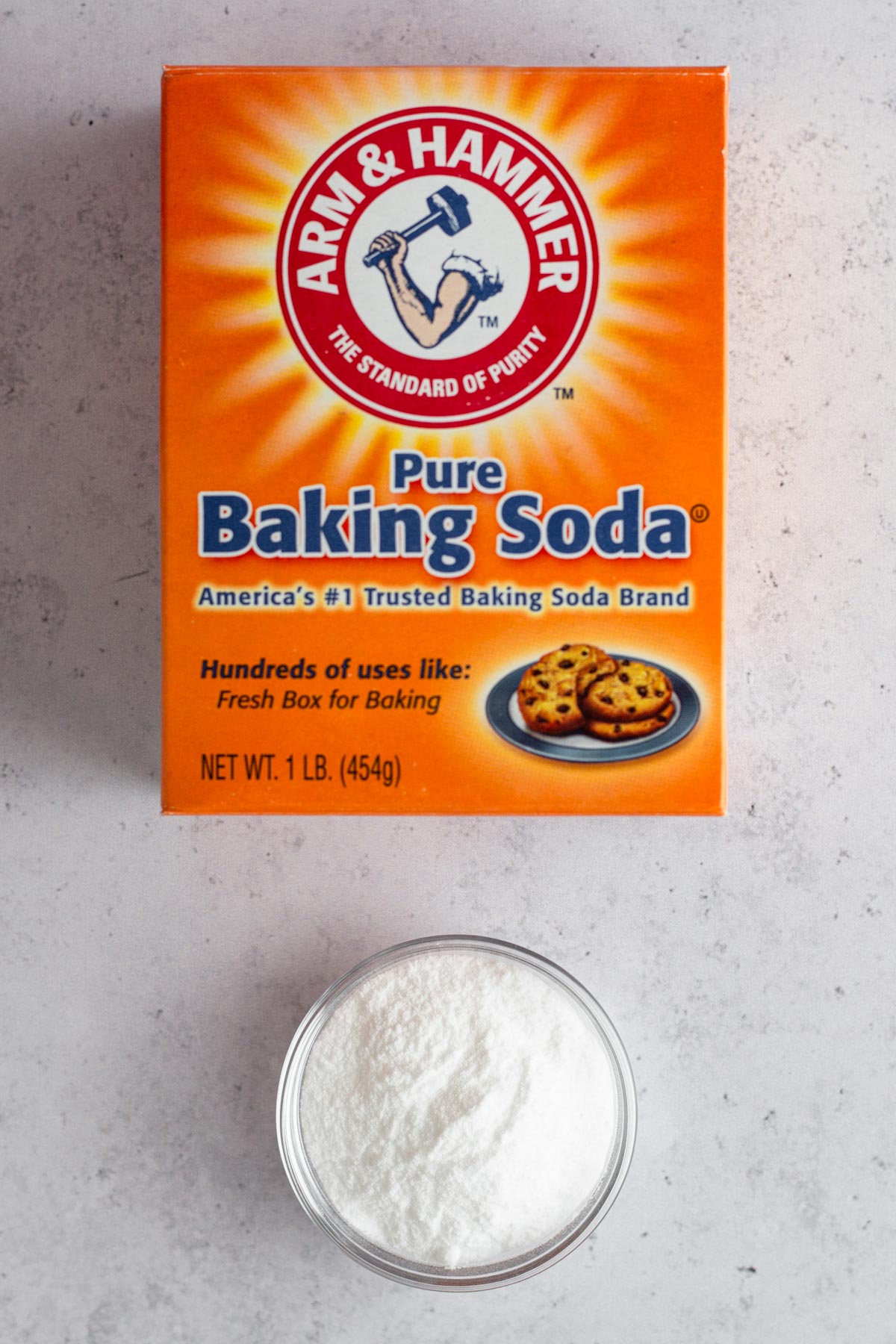
What is baking soda?
Ingredients
Baking soda is pure sodium bicarbonate, which is an alkaline powder.
How It Works
When activated, baking soda releases a gas (carbon dioxide) into our baked goods, causing them to rise.
It's important to know that baking soda has a higher pH level (alkalinity) and 3 to 4 times the leavening power of baking powder, so it's takes less baking soda to achieve the same rise as a larger measure of baking powder.
In addition to leavening, baking soda's high pH level also impacts a baked good's texture and level of browning when baked. Cookies made with baking soda will have beautifully golden brown edges.
How It's Activated
Baking soda is activated when it is mixed with an acid. So in baking, we activate baking soda by pairing it with an acidic ingredient (such as lemon juice, buttermilk, or yogurt) in our recipes.
Note that heat can also activate baking soda. However, without an acidic ingredient to neutralize the soda, your baked good is likely to end up with an unappealing metallic taste. For this reason, it's always recommended that recipes using baking soda also contain an acid to help neutralize the baking soda in addition to activating it.
Baking soda can be a little bit tricky, because you need enough acid in your recipe to activate all of the baking soda. If you have leftover baking soda that isn't activated, you could end up with a slightly metallic taste in your baked goods. No thank you! This is why it's important to follow your recipe and measure your ingredients properly.
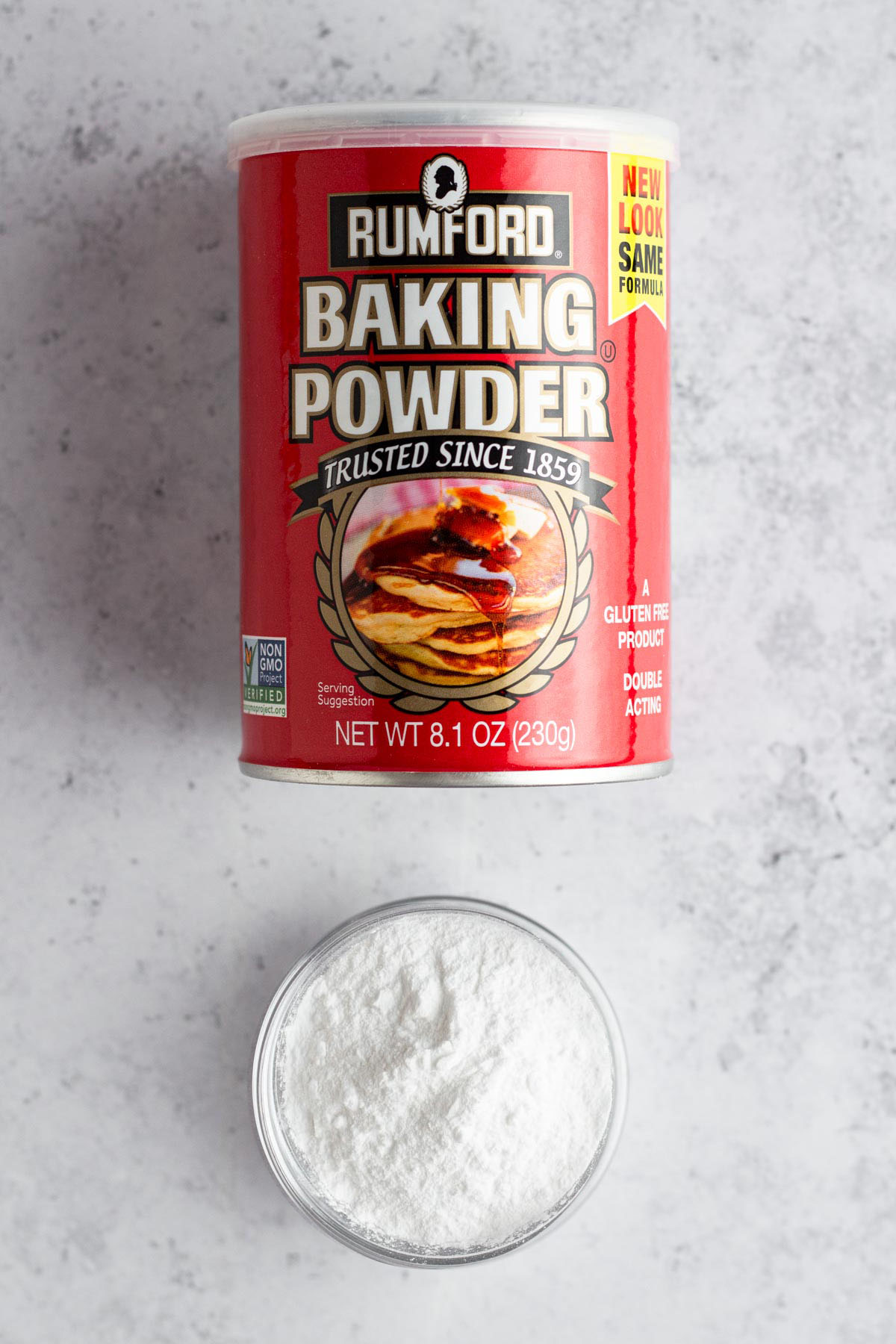
What is baking powder?
Ingredients
Baking powder is a mixture of sodium bicarbonate (baking soda), powdered acid (typically cream of tartar), and an anti-caking agent (like cornstarch).
How It Works
Like baking soda, when activated, baking powder releases a gas (carbon dioxide) into our baked goods, causing them to rise.
Also like baking soda, baking powder affects baked goods' texture and browning, though not as significantly as baking soda since its pH level is not as high (less alkaline).
How It's Activated
Today, most baking powder is double-acting. This means that it is activated twice: first when it is mixed with a liquid, and again when it is heated. In baking, our baking powder is first activated when it's added to our batter and combined with other liquid ingredients, and it's activated again when it's heated in the oven. Since baking powder already contains an acid, it is not necessary to mix baking powder with an acidic ingredient in order to activate it.
Substitues
My hot take on how to substitute baking soda or baking powder: don't do it! Here's why...
You already know that baking is chemistry, and there's no easy way to substitute leaveners without altering the outcome of your recipe.
If you want to use a substitute for baking soda, you could use baking powder instead, though you'll have to increase the amount of baking powder, which could impact the flavor and browning of your baked good. Or you could use self-rising flour instead of all-purpose flour in your recipe, since it already contains a leavener, but this could impact the texture of your baked good. And if you don't already have baking soda on hand, I bet you don't already have self-rising flour, either.
If you want to use a substitute for baking powder, you can use a smaller amount of baking soda plus an acid (like buttermilk), though getting the ratios just right is tricky and the added acid will affect the taste and texture of your baked good. Or you can make your own baking powder by combining baking soda and cream of tartar, though getting is right ratio is once again tricky, and the results can be unreliable.
Baking soda and baking powder are both readily available in the baking aisle of your local supermarket and are affordable. Don't risk wasting the other ingredients in your recipe (and your time) experimenting with alternative leavening methods or ingredient substitutes. Instead, keep both baking soda and powder stocked in your pantry so that you're always ready to bake.
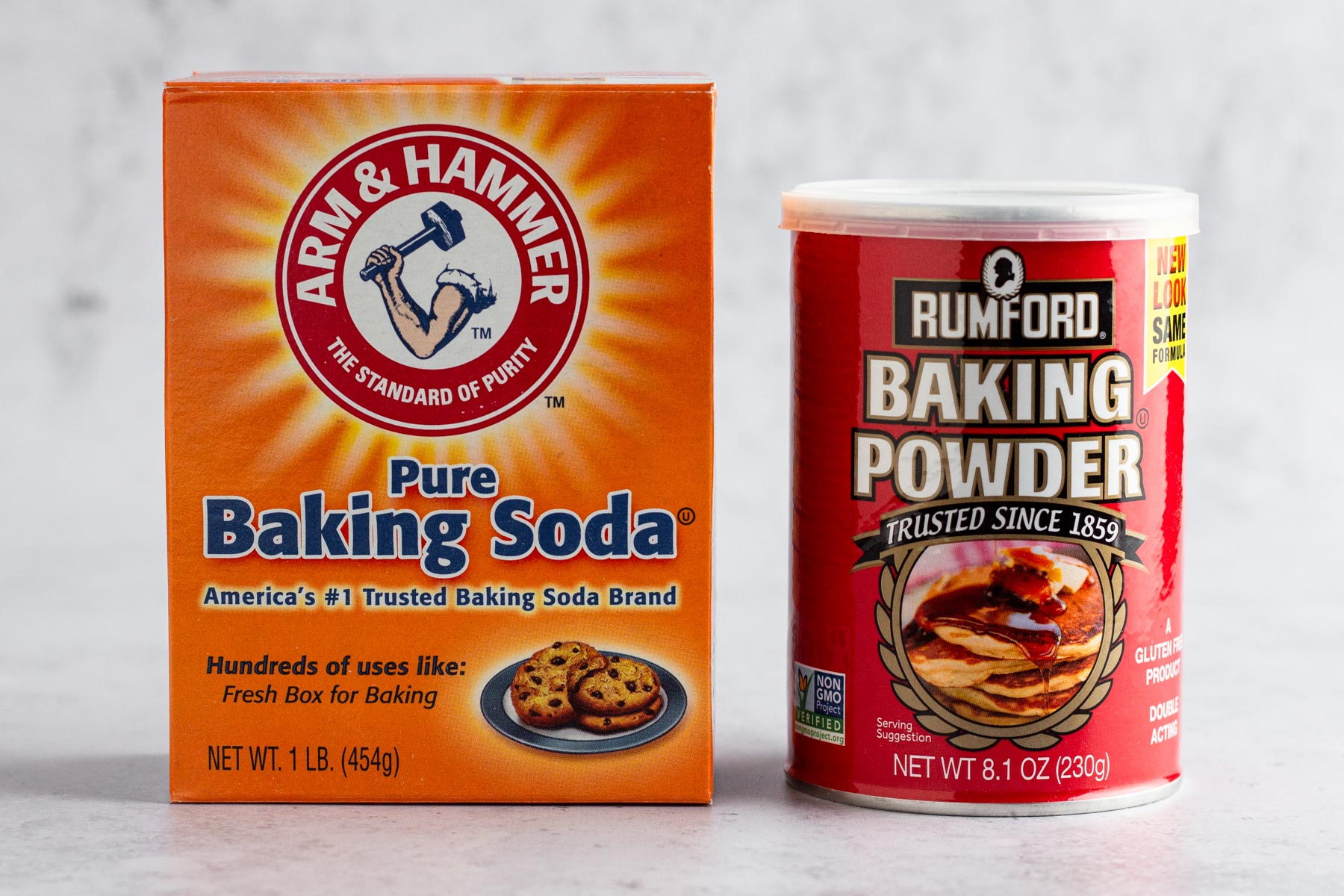
How Often to Replace
Generally, it's best to replace your baking soda and baking powder three to six months after opening to ensure that they're fresh. Baking soda and baking powder that have been open for some time or that have passed their expiration date will lose their potency and will not help your baked goods to rise properly.
If you're unsure if your leaveners are still fresh, use the tests below to check for freshness. Otherwise err on the side of caution and replace them.
How to Test Baking Soda for Freshness
To test baking soda for freshness, place a spoonful of baking soda in a bowl and add a splash of vinegar or lemon juice. The mixture should become very fizzy. If there is little or no fizzing, the baking soda should be replaced.
How to Test Baking Powder for Freshness
To test baking powder for freshness, pour some warm water into a bowl and then add a spoonful of baking powder. The mixture should become fizzy. If there is no reaction, the baking powder should be replaced.
FAQs
After reading this article you should understand that, while baking soda and baking powder leaven baked goods, they are different. They contain different ingredients, work in a similar but different way, have a different strength, and are not interchangeable.
There are a few reasons why a recipe may use both chemical leaveners. First, if a recipe containing baking soda needs more rise, baking powder can be added. Adding extra baking soda could result in a metallic taste if there's not enough acid in the recipe to neutralize additional soda, so adding baking powder instead to provide the extra lift is probably the better bet.
Second, in a recipe where you don't want to neutralize the flavor of an acidic ingredient, a mixture of baking soda and powder may be a good fit, since baking soda alone will minimize or eliminate the acid's flavor.
Third, since both baking soda and powder impact baked goods' texture and browning but at different levels, both may be used to achieve the perfect level of tenderness and browning.
Even though baking powder does not require an acidic ingredient to work (since it already contains an acid), it can be used in recipes that include an acidic ingredient that we want to be able to taste. Take buttermilk biscuits for example. My recipe for buttermilk biscuits contains a hefty amount of buttermilk (an acid) but uses baking powder instead of baking soda to leaven the biscuits. This is because we want to be able to taste the buttermilk in the biscuits. If we used baking soda, it would neutralize the buttermilk's acidity, and we'd lose its tangy flavor in our biscuits.
You probably remember the homemade volcano experiment from grade school, when we mixed baking soda with vinegar to create an eruption. That's the same concept as what's happening inside our baked goods, but there are a number of different acids that can be used to activate baking soda besides vinegar. Common acidic ingredients used in baking are buttermilk, sour cream, brown sugar, lemon or orange juice, yogurt, molasses, cocoa powder (natural unsweetened not Dutch process), and honey.
Often times yes, but the leaveners will lose their effectiveness over time. For example, cookie dough can often be chilled in the fridge for up to 24 hours before baking, but leaving it to chill for too long before baking will negatively impact how well the cookies rise. Freezing can help to retain the leaveners potency, which is one reason why cookie dough will last longer before baking in the freezer than it will in the fridge. Detailed recipes will include instructions for how long a dough or batter can be stored before baking.
More Baking Tips
Love this baking tutorial? Check out these other great baking tips linked above! And don't forget to subscribe to Always Eat Dessert for even more baking tips and simple dessert recipes.


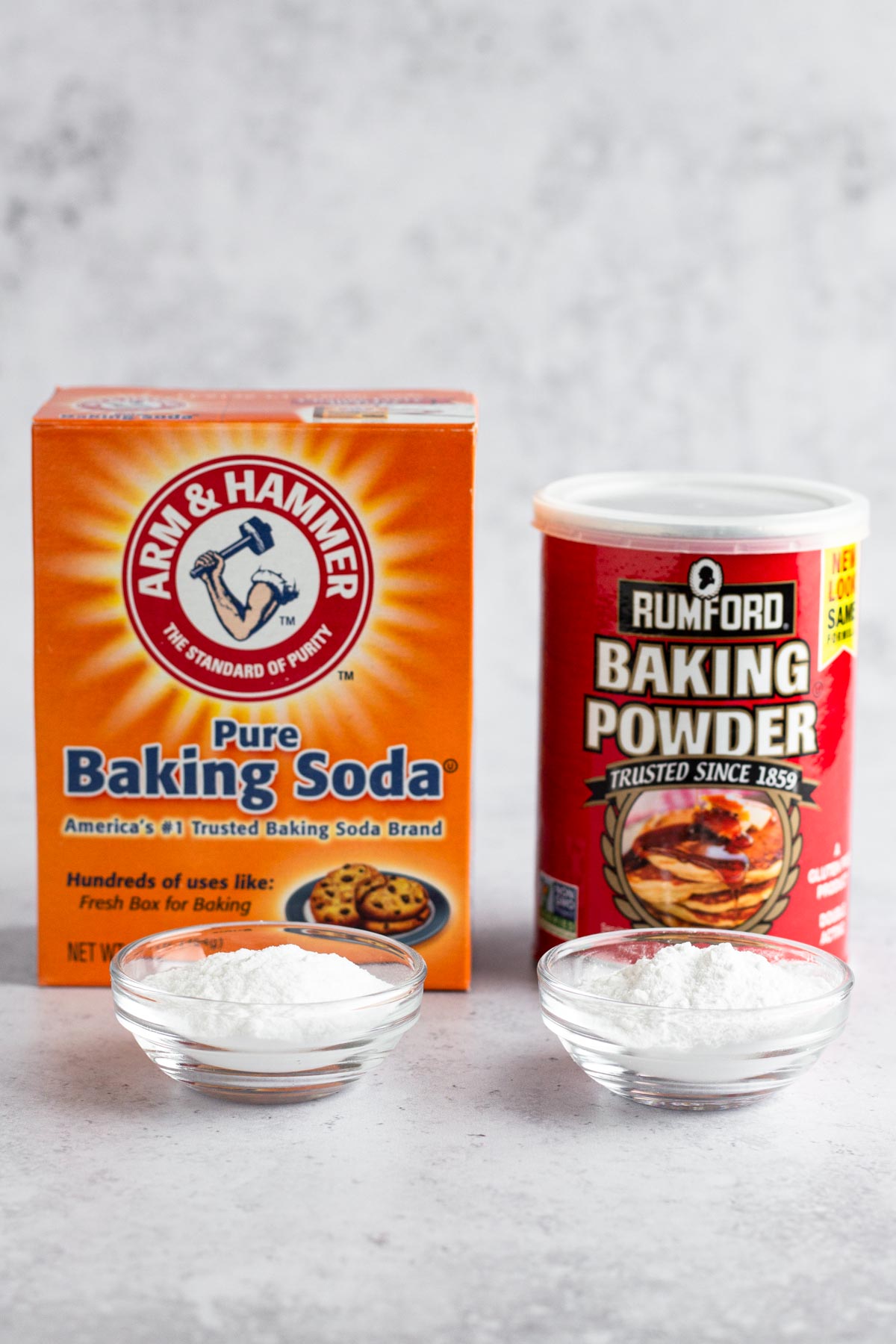
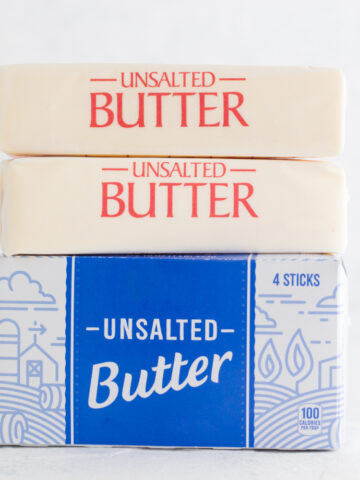
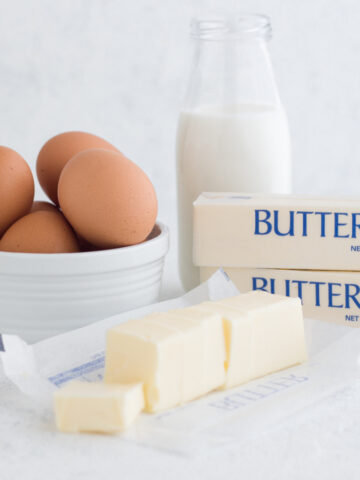
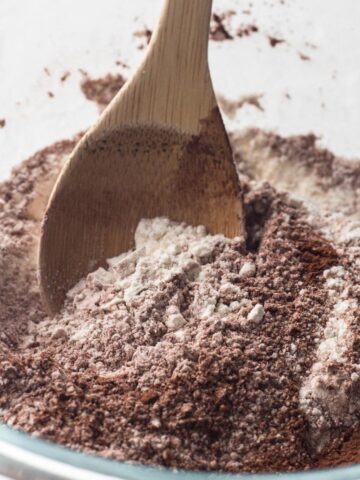
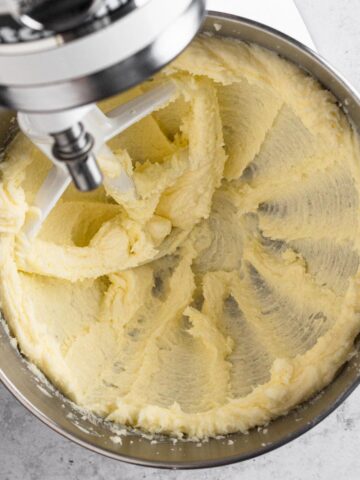
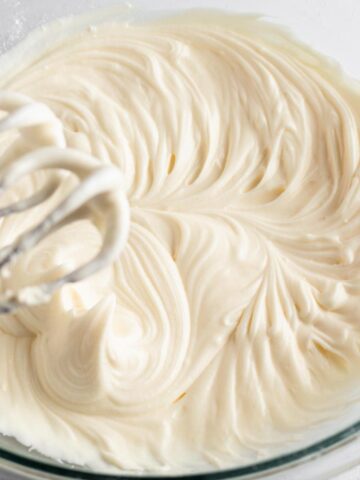
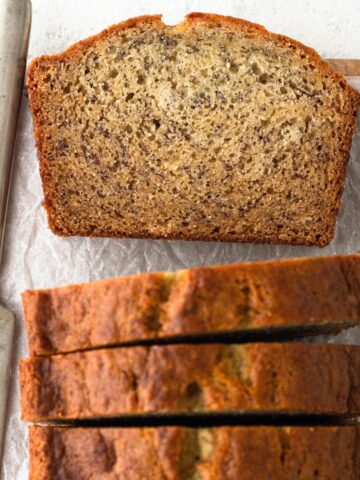
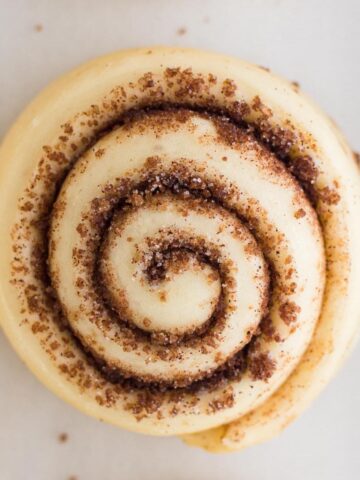
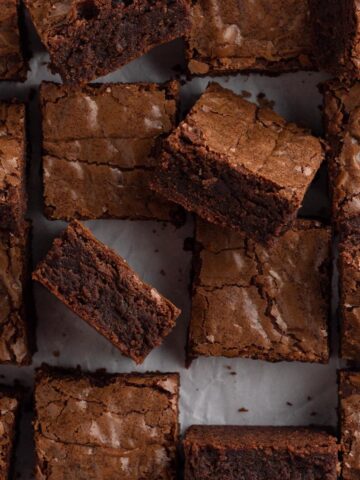
Tejaswi Ramesh
Hi Allison. For a cookie reciepe containing millet&whole wheat flour, with some powdered white sugar,cardamom powder,unsalted butter & baking soda, which of the above ingredients will act as the acid to activate the soda? or do we need to add acid sperately? which acid would you recommoned? The cookies turned out a litlle hard than expected.
Allison Ferraro
Hi Tejaswi! None of these other ingredients that you mentioned are acidic, so I'm not sure how the baking soda in the recipe was intended to be activated. You could consider trying baking powder instead to see if it yields your desired result (you'll want to use about 4 times as much baking powder as you did soda). Since I'm not familiar with this recipe, I'm not able to confidently share a recommendation for adding an acidic ingredient. And since these cookies don't contain an ingredient that helps to soften the dough - like egg, brown sugar, or cornstarch - I'm not surprised that you found them to be hard. The best bet may be to find another recipe that's better suited to what you're looking for. Happy baking!
- Allison
Pat
We’re missing a critical wonder of chemistry here… There are many recipes that use baking soda for leavening, yet have no acidic components. The mystery of how this can actually leaven anything lies in the fact that when sodium bicarbonate (NaHCO3) is heated above 176 degrees Fahrenheit, a chemical decomposition reaction kicks in that breaks down NaHCO3 into three separate compounds: 1) sodium carbonate (Na2CO3), 2) water (H2O), and 3) our coveted leavening agent, carbon dioxide (CO2)! No acid needed… just heat! Acids are required below 176 degrees Fahrenheit, but not above. (Which, by the way, is why cookie dough can be refrigerated for days or frozen for months, and the cookie will still rise when baked.) Incidentally, the higher the temperature, the faster the decomposition reaction will complete.
Allison Ferraro
Hi Pat! Great point! While it's true that heat can also activate baking soda, without an acid to neutralize it the baked good is likely to end up with an unappealing metallic taste. For this reason, it's always recommended that recipes using baking soda also contain an acidic liquid to help neutralize in addition to activate.
- Allison
alice
WHICH is used for CLEANING!?
Allison
Hi Alice! Baking soda can be used for various cleaning purposes.
- Allison